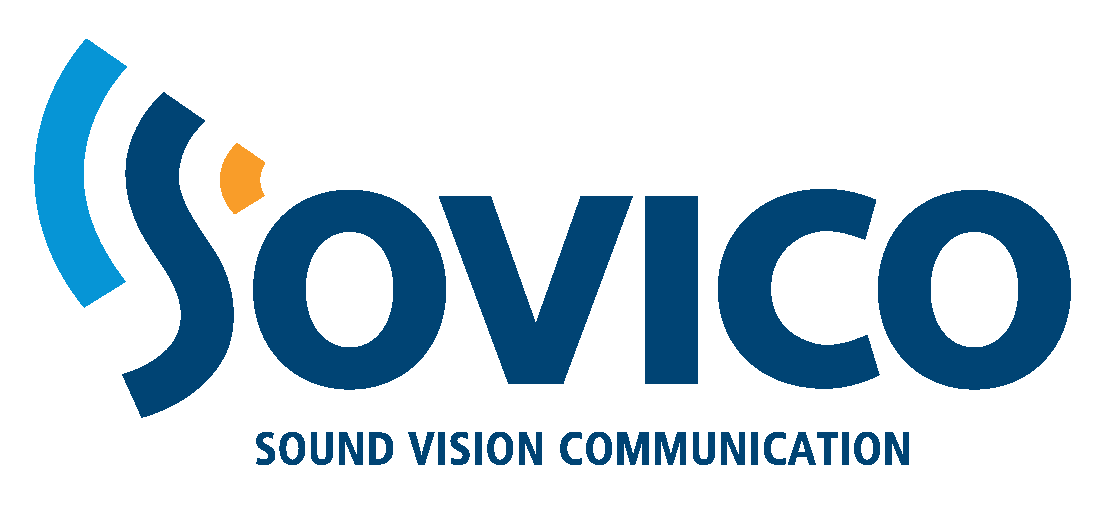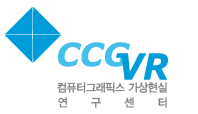
ABOUT
The 22nd Pacific Conference on Computer Graphics and Applications (Pacific Graphics 2014) will be held in Seoul on Oct 8-10, 2014. Pacific Graphics (PG) is an annual international conference on computer graphics and applications. As a highly successful series, Pacific Graphics provides a premier forum for researchers, developers, practitioners in the Pacific Rim and around the world to present and discuss new problems, solutions, and technologies in computer graphics and related areas.
Important Dates
| Abstract Submission | June 6, 2014 - 23:59 PDT (GMT-7) |
| Full/Short Paper Submission | June 13, 2014 - 23:59 PDT (GMT-7) |
| Author Notification | July 31, 2014 - 23:59 PDT (GMT-7) |
| Camera Ready | August 31, 2014 - 23:59 PDT (GMT-7) |
| Conference | October 8-10, 2014 |
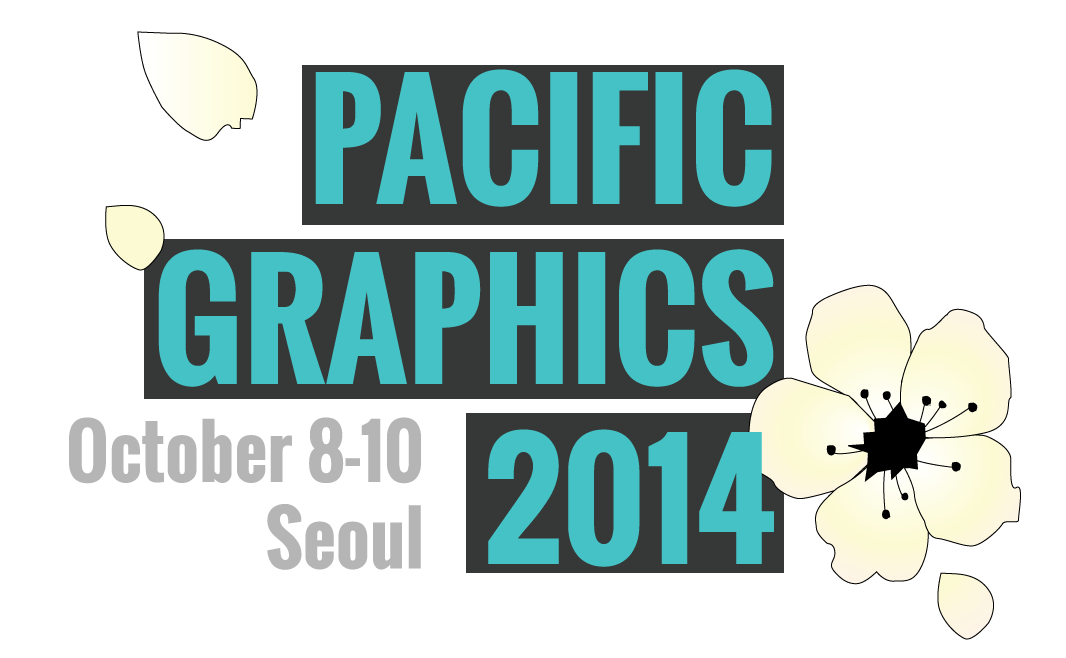
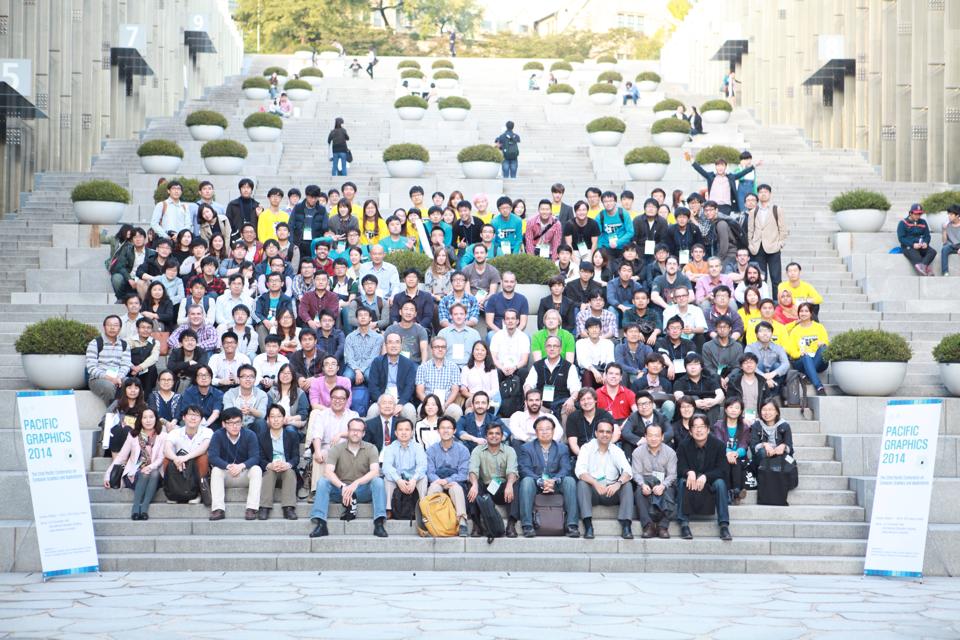
FOR ATTENDEES
Conference Locator and Lunch Information
Campus map and place locator can be found at ( link ).
Welcome Party Location can be found at ( link ).
Complimentary conference lunch information can be found at ( link ).
Travel/Visa
Information on visa requirements can be found at ( link ).
If you require an invitation letter to apply for a visa, please email Dr. SeongKi Kim
email : skkim9226 (at) gmail.com
subject : visa for PG2014
Please include the paper title and ID you will be presenting, as well as postal address if you want to receive a hardcopy letter.
Accomodations
The following hotels are suggested for PG14 attendants, but you can explore other hotel options using search engines such as booking.com. Note that there are no special rates for PG14.
University Housing
* To make the reservations in the university housings listed above, please contact seonjookim@yonsei.ac.kr. The reservations will be first-come-first-serve, as we have a limited number of rooms for these two places.
Hotels Close to Ewha University
High End Hotels convenient to Ewha University
Things to do in seoul
Ewha is located at the central area of Seoul, and is close to fashion shops, restaurants and historical places of Seoul. Please visit the official travel guide to Seoul and Korea in general for more information about tourism.
The Seoul metro system provides the most convenient way to access different areas of Seoul. The closest metro station to Ewha is the Ewha Womans Univ. station (Edae) of line 2, green line, and interesting places such as Hongik Univ station (Hongdae) and Sinchon
station are only two stops away.
PROGRAM
PROGRAM SCHEDULE
Full program can be found here ( google doc, pdf ).
Technical Papers Video Highlight
KEYNOTE SPEAKERS
Networks of Shapes and Images
Leonidas Guibas
Stanford University
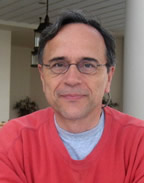
Across science, engineering, medicine and business we face a deluge of data coming from sensors, from simulations, or from the activities of myriads of individuals on the Internet. The data often has a geometric and/or visual character, as is the case with 1D GPS traces, 2D images and videos, 3D scans, and so on. Furthermore, the data sets we collect are frequently highly correlated, reflecting information about the same or similar entities in the world, or echoing semantically important repetitions/symmetries or hierarchical structures common to both man-made and natural objects.
It is important to develop rigorous mathematical and computational tools for making such relationships or correspondences between data sets first-class citizens -- so that the relationships themselves become explicit, algebraic, storable and searchable objects. Networks of such relations can interconnect data sets into societies where the “wisdom of the collection” can be exploited in performing operations on individual data sets better, or in further assessing relationships between them. Examples include entity extraction from images or videos, 3D segmentation, the propagation of annotations and labels among images/videos/3D models, variability analysis in a collection of shapes, etc.
The talk will cover general mathematical and computational tools for the construction, analysis, and exploitation of such relational networks -- illustrated by several concrete examples using 3D models and/or images. By creating societies of data sets and their associations in a globally consistent way, we enable a certain joint understanding of the data that provides the powers of abstraction, analogy, compression, error correction, and summarization.
This ”functorial” view of geometric data puts the spotlight on consistent, shared relations and maps as the key to understanding structure in data. It is a little different from the current dominant paradigm of extracting supervised or unsupervised feature sets, defining distance or similarity metrics, and doing regression or classification – though sparsity still plays an important role. The inspiration is more from ideas in functional analysis and homological algebra, exploiting the algebraic structure of data relationships or maps in an effort to disentangle dependencies and assign importance to the vast web of all possible relationships among multiple geometric data sets. Ultimately, useful semantic structures simply emerge from these map networks.
This is an overview of joint work with multiple collaborators, as discussed in the talk.
Presentation Slides
Image and Video Forensics through Content Analysis
James F. O'Brien
University of California, Berkeley
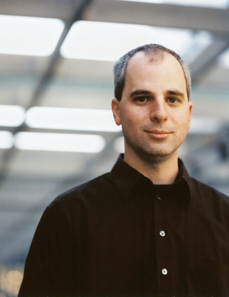
Advances in computational photography, computer vision, and computer
graphics allow for the creation of visually compelling photographic
forgeries. Forged images have appeared in tabloid magazines,
main-stream media outlets, political attacks, scientific journals, and
the hoaxes that land in our email in-boxes. These doctored photographs
are appearing with growing frequency and sophistication, and even
experts cannot rely on visual inspection to distinguish authentic
images from forgeries. Techniques in image forensics operate on the
assumption that photo-tampering will disturb some statistical or
geometric property of an image. In a well-executed forgery these
disturbances will either be perceptibly insignificant, or they may be
noticeable but subjectively plausible. Methods for forensic analysis
provide a means to detect and quantify specific types of tampering. To
the extent that these perturbations can be quantified and detected,
they can be used to objectively invalidate a photo. This talk will
focus on forensic methods based on geometric content analysis. These
methods work by finding inconsistencies in the geometric relationships
among objects depicted in a photograph. The geometric relationships
in the 2D image correspond to the projection of the relations that
exist in the 3D scene. If a scene is known to contain a given
relationship but the projected relation does not hold in the
photograph, then one may conclude that the photograph is not a true
projective image of the scene. The goal is to build a set of hard
constraints that must be satisfied or else the image must be fake.
Presentation Slides
AN EVOLUTION OF MOBILE GRAPHICS, V2
Michael Shebanow
Samsung Research America

In this keynote, I’ll present my view on the evolution of Mobile
Graphics, future directions for Mobile GPUs, and application
directions. Mobile Graphics in this case refers to graphics devices
embedded in handheld devices such as smart phones, phablets, and
tablets. Due to the sheer volume of handheld devices shipped and
because of the critical importance of graphics in such devices, a
fiercely competitive market for Mobile GPUs has forced GPU designers
to focus on continuous improvements in efficiency (limited power and
limited cost structure) and device capabilities. Of course, this
increased capability allows for exciting new applications in handheld
devices of the future.
Presentation Slides
Paper Awards
Best Paper Award
Single-shot High Dynamic Range Imaging Using Coded Electronic Shutter by Hojin Cho, Seon Joo Kim, Seungyong Lee
Best Student Paper Award
Interactive Image-Guided Modeling of Extruded Shapes by Yan-Pei Cao, Tao Ju, Zhao Fu, Shi-Min Hu
Best Poster Award
Automatic 3D Posing from 2D Hand-Drawn Sketches by Alexandros Gouvatsos, Zhidong Xiao, Neil Marsden, Jian J. Zhang
Conference Photo Collection
Conference Photo Collection site : https://www.facebook.com/PG2014EWHA/photos
ORGANIZERS
General Chairs
Oliver Deussen, University of Konstanz
Seungyong Lee, POSTECH
Dinesh Manocha, University of North Carolina at Chapel Hill
Program Chairs
John Keyser, Texas A&M University
Young J. Kim, Ewha Womans University
Peter Wonka, KAUST
Organization Co-Chairs
Soo-Mi Choi, Sejong Univ.
Yoo-Joo Choi, KGIT
Seon Joo Kim, Yonsei University
Yanghee Nam, Ewha Womans University
Kyungju Park, Chung-Ang Univ.
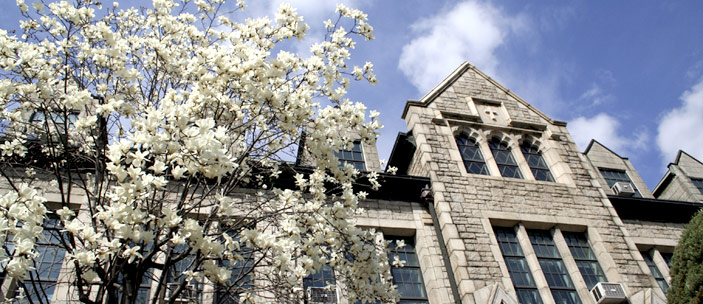
International Program Committee
| Alexander Belyaev | Heriot-Watt University, UK | Jung-Hong Chuang | National Chiao Tung University, Taiwan |
| Nicolas Bonneel | Harvard University, USA | Yung-Yu Chuang | National Taiwan University, Taiwan |
| Cindy Grimm | Oregon State University, USA | Carsten Dachsbacher | Karlsruher Institut fuer Technologie, Europe/Germany |
| Tao Ju | Washington University in St. Louis, USA | Yoshinori Dobashi | Hokkaido University, Japan |
| Oliver van Kaick | Simon Fraser University, Canada | Zhao Dong | Cornell University, USA |
| Myung-Soo Kim | Seoul Naional University, Korea | Diego Gutierrez | University de Zaragoza, Europe/Spain |
| Leif Kobbelt | RWTH Aachen, Germany | Ralf Habel | Disney Research Zürich, Europe/Switzerland |
| Bruno Levy | INRIA, France | Qiming Hou | Zhejiang University, China |
| Yang Liu | Microsoft, China | Shimin Hu | Tsinghua University, China |
| Daniele Panozzo | ETH Zurich, Switzerland | Nico Pietroni | Istituto di Scienza e Tecnologie dell’Informazione, Italy |
| Stefan Jeschke | IST, Europe/Austria | Hong Qin | Stony Brook University, USA |
| Leo Jiaya Jia | The Chinese University of Hong Kong, Hong Kong | Nicolas Ray | Inria, France |
| Joaquim Jorge | Instituto Superior Técnico, Europe/Portugal | Scott Schaefer | Texas A&M University, USA |
| Johannes Kopf | Microsoft Research, USA | Claudio Silva | NYU, USA |
| Hao Li | USC, USA | Cyril Soler | Inria, France |
| Wen-Chieh (Steve) Lin | NCTU, Taiwan | Tan Tiow Seng | National University of Singapore, Singapore |
| Steve Lin | Microsoft Research Asia, China | Changhe Tu | Shandong University, China |
| Feng Liu | Portland State University, USA | Wenping Wang | Hong-Kong University, Hong-Kong |
| Ligang Liu | University of Science &Technology of China, China | Emily Whiting | ETH Zurich, Switzerland |
| Niloy Mitra | University of College London, Europe/UK | Kai (Kevin) Xu | National University of Defense Technology, China |
| Manuel M. Oliveira | Universidade Federal do Rio Grande do Sul, Brazil | Rhaleb Zayer | Inria, France |
| Pieter Peers | Williams&Mary College, USA | Jernej Barbic | University of Southern California, USA |
| Fabio Pellacini | University of Sapienza, Europe/Italy | Christopher Batty | University of Waterloo, Canada |
| Huamin Qu | Hong Kong University of Science and Technology, Hong Kong | Derek Bradley | Disney Research Zurich, Switzerland |
| Zhong Ren | Zhejiang University, China | Mark Carlson | DreamWorks Animation, USA |
| Holly Rushmeier | Yale University, USA | Stelian Coros | Disney Research Zurich, Switzerland |
| Shigeo Takahashi | The University of Tokyo, Japan | Zhigang Deng | University of Houston, USA |
| Xin Tong | Microsoft Research Asia, China | Arjan Egges | Utrecht University, Netherlands |
| Jue Wang | Adobe, USA | Ladislav Kavan | University of Pennsylvania, USA |
| Yu-Shuen Wang | National Chiao Tung University, Taiwan | Chang-Hun Kim | Korea University, Korea |
| Hyeong-Seok Ko | Seoul Naional University, Korea | Tim Weyrich | University of College London, Europe/UK |
| Taku Komura | University of Edinburgh, UK | Tien-Tsin Wong | The Chinese University of Hong Kong, China |
| Sung-Hee Lee | Gwangju Institute of Science and Technology, Korea | Enhua Wu | Chinese Academy of Sciences & University of Macau, China |
| Junyong Noh | KAIST, Korea | Chris Wyman | NVIDIA, USA |
| Miguel Otaduy | University Rey Juan Carlos, Spain | Kun Xu | Tsinghua University, China |
| Lionel Reveret | Inria, France | Dong-ming Yan | KAUST, Saudi Arabia |
| Taehyun Rhee | Victoria University of Wellington, New Zealand | Yongliang Yang | KAUST, Saudi Arabia |
| Matthias Teschner | University of Freiburg, Germany | Ruigang Yang | University of Kentucky, USA |
| Nils Thuerey | ScanlineVFX, Canada | Sai-Kit Yeung | Singapore University of Technology and Design, Singapore |
| Huamin Wang | Ohio State University, USA | Jingyi Yu | University of Delaware, USA |
| Weiwei Xu | Hangzhou Normal University, China | Kun Zhou | Zhejiang University, China |
| Min H.Kim | KAIST, Korea | Matthias Zwicker | University of Bern, Europe/Switzerland |
| In-Kwon Lee | Yonsei University, Korea | Baoquan Chen | SIAT, China |
| Sungkil Lee | Sungkyunkwan University, Korea | Qixing (Peter) Huang | Stanford, USA |
| Sung-eui Yoon | Korea Advanced Institute of Scienece Technology, Korea | Hui Huang | SIAT, China |
| Cem Yuksel | University of Utah, USA | Eugene Zhang | Oregon State University, USA |
| JungHyun Han | Korea University, Korea | Stefan Bruckner | University of Bergen, Norway |
| Insung Ihm | Sogang University, Korea | Yangyan Li | Stanford, USA |
| Hujun Bao | Zhejiang University, China | Lvdi Wang | MSRA, China |
| Bernd Bickel | Disney Research Zurich, Europe/Switzerland | Hongzhi Wu | Zhejiang University,China |
| Michael Brown | National University of Singapore, Singapore | Alec Jacobson | ETH, Switzerland |
| Chun-Fa Chang | National Taiwan Normal University, Taiwan | Kalyan Sunkavalli | Adobe, USA |
| Bing-Yu (Robin) Chen | National Taiwan University, Taiwan | Yusuke Tokuyoshi | Square Enix, Japan |
| Guoning Chen | USA | Carol O'Sullivan | Disney Research, USA |
| Ming-Te Chi | National Cheng-Chi University, Taiwan | Gordon Wetzstein | MIT, USA |
VENUE & REGISTRATION
Venue
LG Convention Hall,International Education Building,52, Ewhayeodae-gil, Seodaemun-gu, Seoul 120-750 Korea

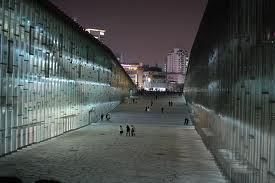
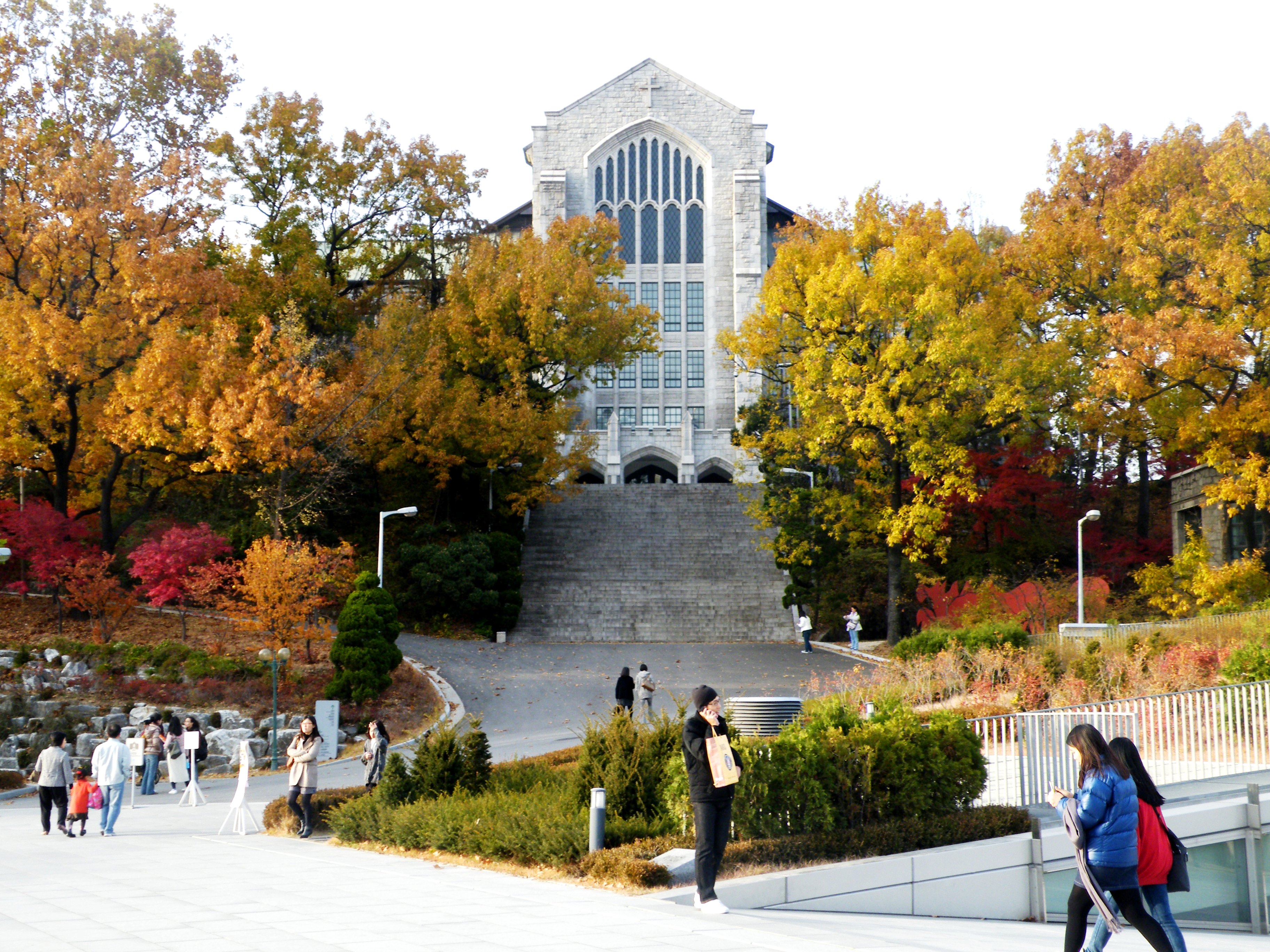
REGISTRATION
| Category | Early Registration(on/before Sep 15) | Pre-registration(on/before Sep 29) | Late/On-site Registration(after Sep 29) |
| Regular | USD 600 | USD 650 | USD 700 |
| Student | USD 380 | USD 420 | USD 450 |
Registration Site: http://reg-pg14.onpcs.com/main/ Both regular/student registrations cover the conference proceedings on a USB, refreshments, lunch, welcome party, and conference banquet. Registration Cancellation Policy Cancellations are required to be made on/before September 29, 2014. Otherwise, no refund will be issued. Processing fee of USD 50 will be applied for all approved refunds. If you have any question about registration, please contact to general secretary, at pg2014.register@gmail.com
SUPPORTERS



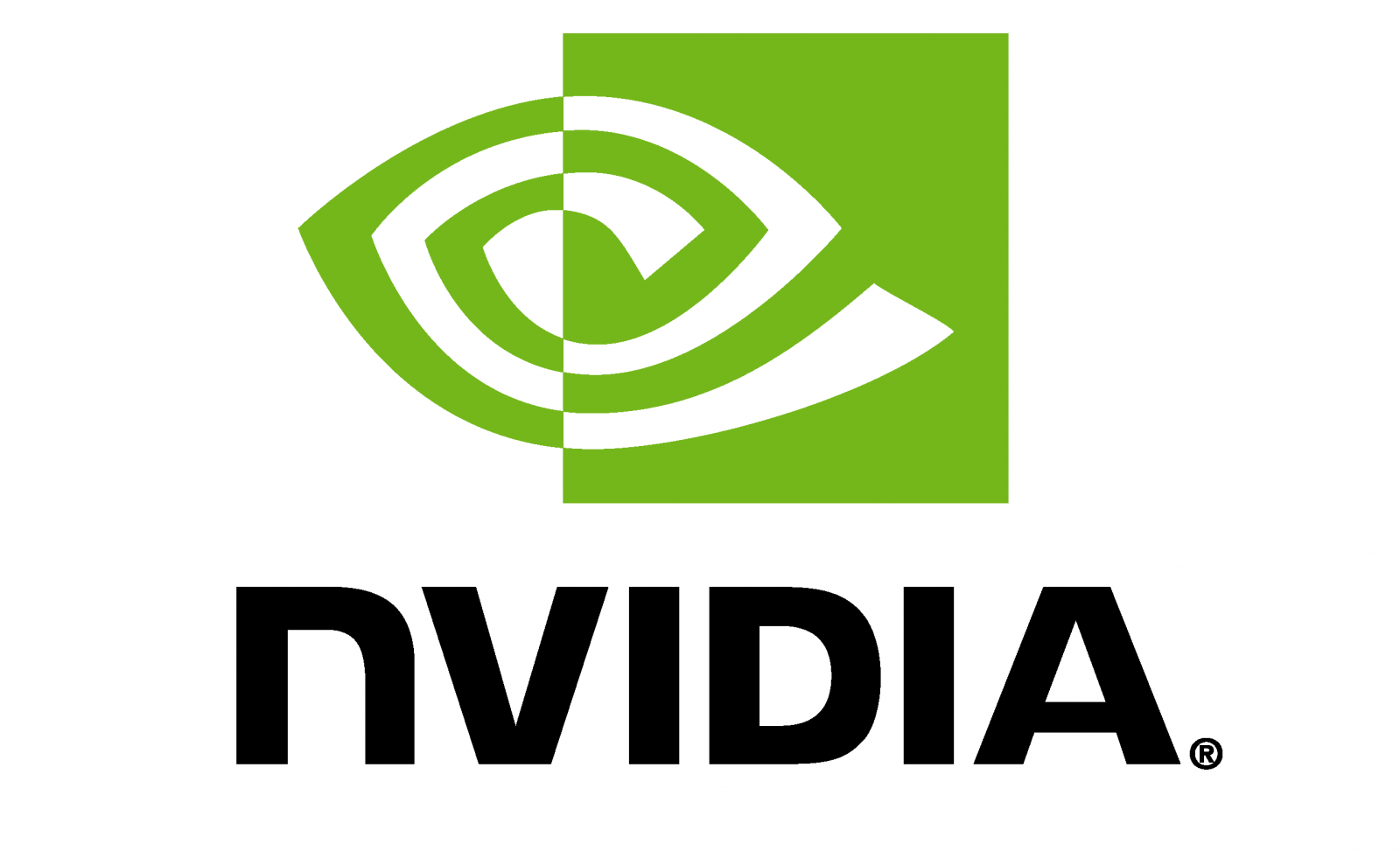
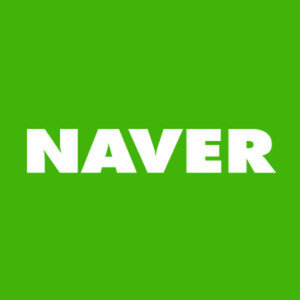
.png)



